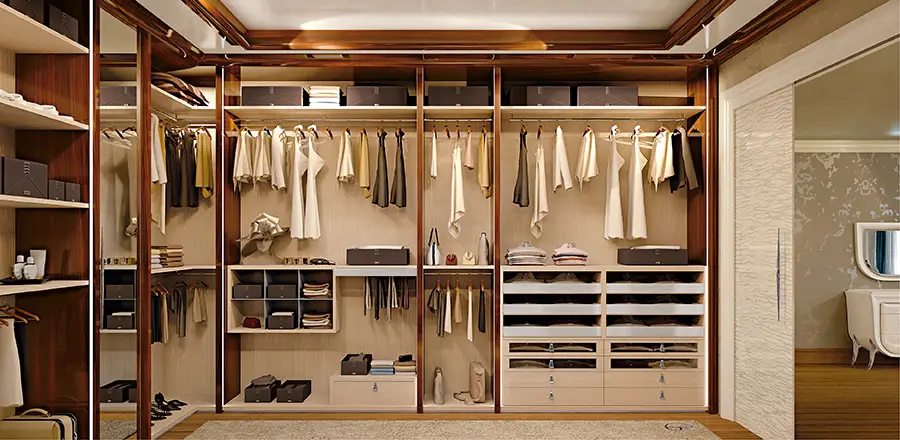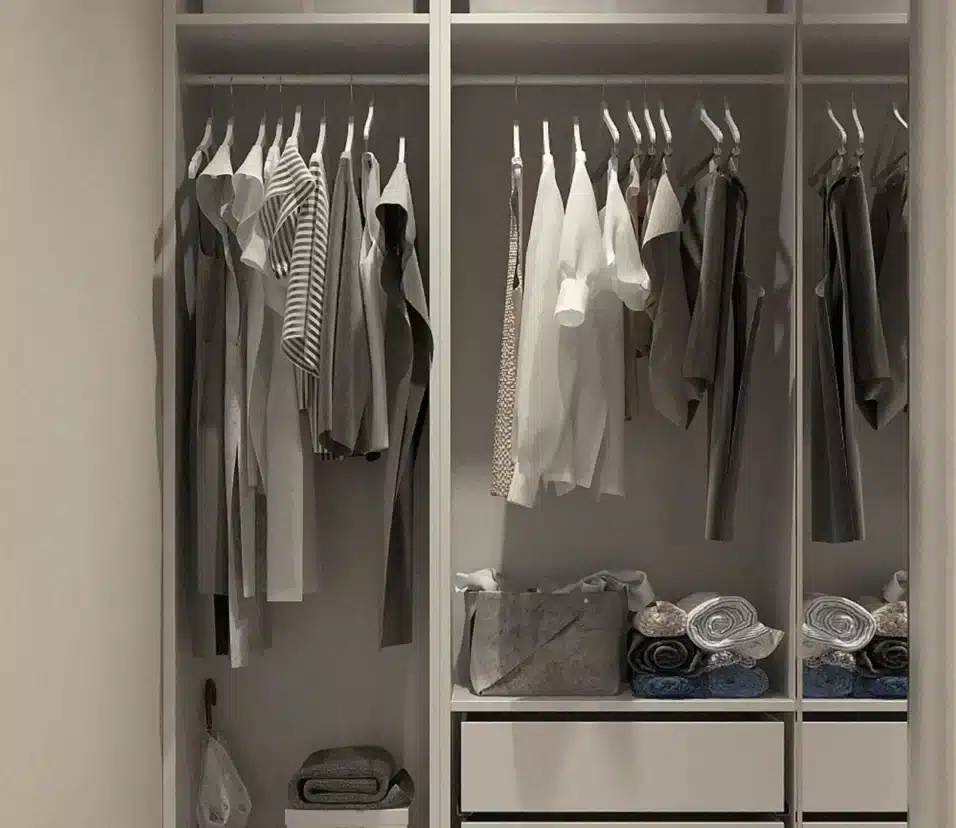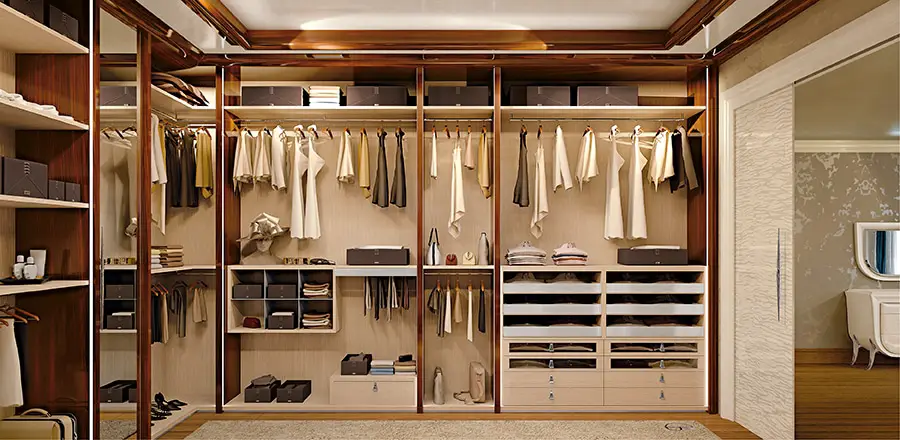How To Have A Minimalist Wardrobe
Introduction
How To Have A Minimalist Wardrobe: In a world overflowing with choices and trends, embracing a minimalist wardrobe offers a breath of fresh air and an avenue towards simplicity and intentionality. A minimalist wardrobe isn’t just about decluttering your closet; it’s a mindful approach to curating a collection of clothing that truly resonates with your style, values, and lifestyle. By focusing on quality over quantity and embracing a less-is-more philosophy, you can create a wardrobe that not only looks effortlessly chic but also aligns with your desire for a clutter-free and sustainable life.
The essence of a minimalist wardrobe lies in paring down your clothing items to a carefully selected few that serve multiple purposes. It’s about choosing versatile pieces that can be mixed and matched effortlessly, allowing you to create numerous outfits from a limited selection. This not only saves you time and stress while getting dressed but also reduces decision fatigue.
One of the fundamental principles of building a minimalist wardrobe is to invest in high-quality, timeless pieces that transcend fleeting trends. Classic staples like well-fitted jeans, a white button-down shirt, a tailored blazer, and a little black dress can form the foundation of your wardrobe. From there, you can add a few statement accessories or pieces to infuse your personality into your outfits.
By adopting a minimalist approach to her wardrobe, you’re also contributing to a more sustainable fashion industry. We’ll delve deeper into the art of cultivating a minimalist wardrobe .
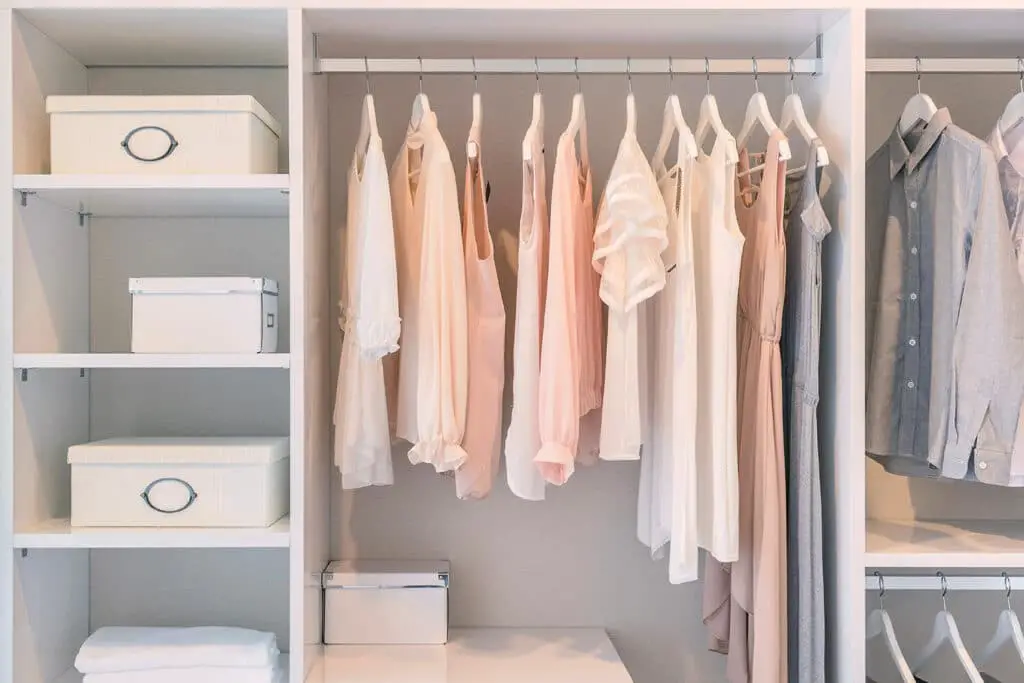
How many pieces in a minimalist wardrobe?
30-50 pieces
How many clothes should be in a capsule wardrobe? A capsule wardrobe can have as many or as few clothes that work for you, but commonly they have anywhere from 30-50 pieces. The capsule checklist I’ve put together has room for 44 items, including shoes and accessories, but you can always have more or fewer than that.
The exact number of pieces in a minimalist wardrobe can vary based on individual preferences, lifestyle, and needs. However, a general guideline often followed is to aim for around 30 to 40 versatile and high-quality items. This includes clothing, outerwear, shoes, and accessories.
The key is to focus on quality over quantity, curating pieces that can be mixed and matched effortlessly to create a wide range of outfits. Classic essentials like well-fitted jeans, neutral tops, versatile dresses, and tailored blazers can form the core of your collection. Layering pieces, such as cardigans and lightweight jackets, can add versatility to your outfits across seasons.
Footwear and accessories should also be carefully considered. A few pairs of shoes that cover different occasions and weather conditions, along with well-chosen accessories like scarves, belts, and jewelry, can enhance and diversify your looks.
Remember, the goal of a minimalist wardrobe is not a rigid adherence to a specific number, but rather an intentional curation that reflects your personal style, while promoting sustainability and ease. Regularly evaluating your wardrobe and making thoughtful additions and subtractions will help you maintain a collection that truly resonates with your lifestyle and values.
What is the 33 items in minimalist wardrobe?
The idea behind Project 333 is simple: Wear only 33 articles of clothing for the next 3 months. All clothing, accessories, jewelry, outerwear, and shoes count towards your number. Exceptions include wedding rings, underwear, sleepwear, in-home loungewear, and workout clothing.
The concept of a 33-item minimalist wardrobe is often associated with the “Project 333” challenge, wherein participants aim to live with only 33 clothing items for three months. This challenge encourages individuals to simplify their wardrobe by selecting a specific number of versatile pieces that can be mixed and matched.
The 33 items typically include clothing, outerwear, footwear, and accessories, while items like underwear, sleepwear, and workout clothes are often exempt. The goal is to curate a collection that covers a range of occasions and weather conditions. Core essentials might consist of well-fitted jeans, basic tops, dresses, blouses, and sweaters, with outerwear and jackets for layering.
Footwear selection usually involves a few pairs that can cater to various needs, such as casual and formal occasions, and different weather conditions. Accessories like scarves, belts, and jewelry are essential to elevate and personalize outfits.
Adopting a 33-item wardrobe encourages a critical evaluation of personal style and the prioritization of quality and versatility. By reducing decision fatigue and streamlining choices, participants can experience the benefits of living with intention and simplicity. It’s important to note that while the number 33 is a common guideline, the essence of the minimalist wardrobe lies in embracing a mindset of conscious consumption and thoughtful curation.
How do I change my wardrobe to minimalist?
How to Create a Minimalist Wardrobe and Closet
- Admit that you own too much clothing.
- Wear fewer colors.
- Embrace the idea of one.
- Donate, sell, recycle, discard.
- Donate, sell, discard some more.
- Impose an arbitrary moratorium on shopping.
- Set a monthly spending limit.
- Purchase quality over quantity.
Transitioning to a minimalist wardrobe involves a thoughtful and gradual process. Begin by assessing your current clothing collection. Take everything out and evaluate each item based on its fit, condition, and how often you wear it. Set aside pieces that truly resonate with your style and serve practical purposes.
Next, identify your core essentials – versatile, timeless pieces that can be mixed and matched. Prioritize quality over quantity, investing in well-made items that align with your personal style and can withstand the test of time. Classic items like well-fitted jeans, neutral tops, dresses, and outerwear often form the foundation.
As you curate your wardrobe, consider the 80/20 rule – wear 20% of your clothes 80% of the time. This highlights the importance of focusing on the pieces you genuinely love and frequently wear.
Donating or responsibly disposing of items you no longer need is a crucial step. Decluttering frees up space and ensures that your remaining pieces shine. Keep in mind that sentimentality or “someday” scenarios can hinder your progress, so be discerning in what you retain.
Lastly, maintain your minimalist wardrobe by practicing mindfulness when shopping. Ask yourself if a new item truly complements your existing collection and aligns with your values. Regularly assess and edit your wardrobe to ensure it continues to reflect your evolving style and needs, and remember that minimalist living is a journey of intentionality and conscious choices.
How do you organize a minimalist wardrobe?
How to Organize Your Closet Like a Minimalist
1 BEGIN WITH A FRESH SLATE. …
2: GROUP SIMILAR ITEMS. …
3: IDENTIFY + PUT AWAY YOUR CORE PIECES. …
4: PUT AWAY ACCESSORIES + LAYERING PIECES. …
5: STORE SEASONAL OR SPECIAL OCCASION PIECES.
Organizing a minimalist wardrobe is all about creating a streamlined and functional space that aligns with the principles of simplicity and intentionality.
Here’s a step-by-step guide to help you achieve an organized minimalist wardrobe:
Declutter:
Begin by removing everything from your closet and drawers. Evaluate each item and decide whether it fits your style and serves a practical purpose. Set aside items you no longer wear or need.
Categorize:
Divide your clothing into categories, such as tops, bottoms, dresses, and outerwear. This step helps you see the entirety of your collection and makes organizing easier.
Maximize Visibility:
Use open storage solutions, such as shelves or hanging racks, to make your clothing items easily visible. This reduces the chances of forgetting about pieces and encourages you to rotate your selection.
Color Coordination:
Arrange your items by color to create a visually pleasing and organized look. This arrangement not only simplifies your choices but also makes it easier to mix and match.
Utilize Containers:
Small bins, baskets, or storage boxes can be used to store accessories, like scarves, belts, and jewelry. These containers maintain order while keeping smaller items easily accessible.
Capsule Wardrobe:
Consider creating a capsule wardrobe for each season, focusing on a limited number of items that work well together. This enhances organization and ensures you’re always prepared for changing weather.
Quality Over Quantity:
Embrace the “one in, one out” rule – when adding a new piece to your wardrobe, remove a similar item to maintain a balanced collection.
Regular Maintenance:
Schedule periodic assessments of your wardrobe to keep it clutter-free. Donate or recycle items that no longer align with your minimalist approach.
Organizing a minimalist wardrobe is about simplifying your choices and creating a space that enhances your daily routine. By curating a collection of purposeful and loved items, you’ll find that getting dressed becomes a more enjoyable and effortless experience.
How can I start decluttering my current wardrobe to transition to a minimalist one?
To embark on the journey of transitioning to a minimalist wardrobe, the first step is to declutter your current collection of clothing. This process requires thoughtful consideration and a willingness to detach from items that no longer align with your vision of simplicity and functionality. Begin by setting aside dedicated time for this task, ensuring you won’t be rushed.
Sort your clothes into distinct categories: keep, donate/sell, and discard. Evaluate each piece based on its relevance, versatility, and how often you wear it. Be honest with yourself about whether an item genuinely enhances your style and meets your daily needs. Remember, minimalism is about quality over quantity.
Consider the seasonality of your garments. If an item has remained untouched for a full year, it might be time to part ways. Sentimental attachments should also be weighed against your goal of a minimalist wardrobe. As you make decisions, visualize the streamlined closet you’re aiming for.
Once you’ve curated the items you’ll keep, arrange them in a way that makes your daily routine more efficient. This could mean organizing by type (shirts, pants, dresses), color, or frequency of use. Creating such a curated space not only simplifies your choices but also makes getting dressed a more intentional and enjoyable experience.
Embrace the process as a chance to redefine your personal style and embrace a lighter, clutter-free lifestyle. By thoughtfully decluttering your wardrobe, you’re laying the foundation for a minimalist approach that prioritizes quality, functionality, and the joy of less.
What are some key principles to consider when curating a minimalist wardrobe?
Curating a minimalist wardrobe revolves around fundamental principles that champion simplicity, versatility, and intentionality in your clothing collection. First, focus on quality over quantity – invest in well-made pieces that endure both in style and durability, transcending fleeting trends. Prioritize versatile items that can be mixed and matched to create various outfits, minimizing the need for excess.
Embrace a neutral color palette as the foundation of your wardrobe, as it allows for seamless coordination and ensures that every piece effortlessly complements others. Select timeless silhouettes that stand the test of time, avoiding overly elaborate designs.
Mindful consumption is key; make intentional purchases by considering how an item aligns with your lifestyle and existing pieces. Strive for a clutter-free space by regularly reassessing your collection and letting go of items that no longer serve a purpose.
Incorporate multi-functional accessories that can transform your outfits, extending the life of your core clothing pieces. Finally, stay attuned to your personal style, allowing your wardrobe to reflect your individuality while remaining cohesive and efficient.
By adhering to these principles, your minimalist wardrobe becomes a collection of carefully curated essentials that embody your values, streamline your daily routine, and foster a sense of contentment through purposeful choices.
What’s the best way to organize and store my minimalist wardrobe to ensure easy access and outfit planning?
Efficiently organizing and storing your minimalist wardrobe is essential for hassle-free access and seamless outfit planning. Begin by categorizing your clothing into distinct sections such as tops, bottoms, dresses, and outerwear. Within each category, arrange items by color or type to create a visually appealing and easily navigable setup.
Consider utilizing space-saving storage solutions like slim hangers, adjustable shelving, and clear storage containers. These aids optimize your closet’s layout, making it easier to identify and retrieve pieces. Reserve prime real estate for your most worn items, placing them at eye level for swift selection.
To streamline outfit planning, designate a section for coordinated ensembles. Hanging or folding complete outfits together saves time in the mornings. Use hooks or over-the-door organizers for accessories like belts, scarves, and jewelry, keeping them visible and accessible.
Regularly review and rotate your collection according to seasons to ensure you’re always equipped with weather-appropriate choices. As you plan outfits, keep a mental or physical record of your combinations to avoid repetition.
What strategies can I use to resist the temptation of impulsive clothing purchases and maintain a minimalist wardrobe over time?
Overcoming the allure of impulsive clothing purchases and upholding a minimalist wardrobe demands a blend of mindfulness and effective strategies. Firstly, adopt a “30-day rule”: delay purchasing decisions for a month. This period allows time for genuine consideration and prevents rash acquisitions. It is about releasing yourself from the load of excess, both psychologically and physically, and adopting a way of life that places an emphasis on the things that are genuinely important.
Craft a clear shopping list with specific items that complement your existing wardrobe. Stick to this list to avoid distractions and stay aligned with your minimalist goals. Practice the “one-in, one-out” rule: for every new item you bring in, let go of an existing one to maintain equilibrium.
Prioritize quality over quantity. Research brands known for ethical practices and durable pieces, ensuring that your purchases stand the test of time. When tempted, visualize the overall impact on your minimalist space and reflect on whether the new item genuinely aligns with your style and needs.
Create a cooling-off period for online shopping carts. Save items, then return later to evaluate their importance. Unsubscribe from marketing emails to minimize exposure to temptation. Lastly, cultivate contentment with what you have. It is about releasing yourself from the load of excess, both psychologically and physically, and adopting a way of life that places an emphasis on the things that are genuinely important.
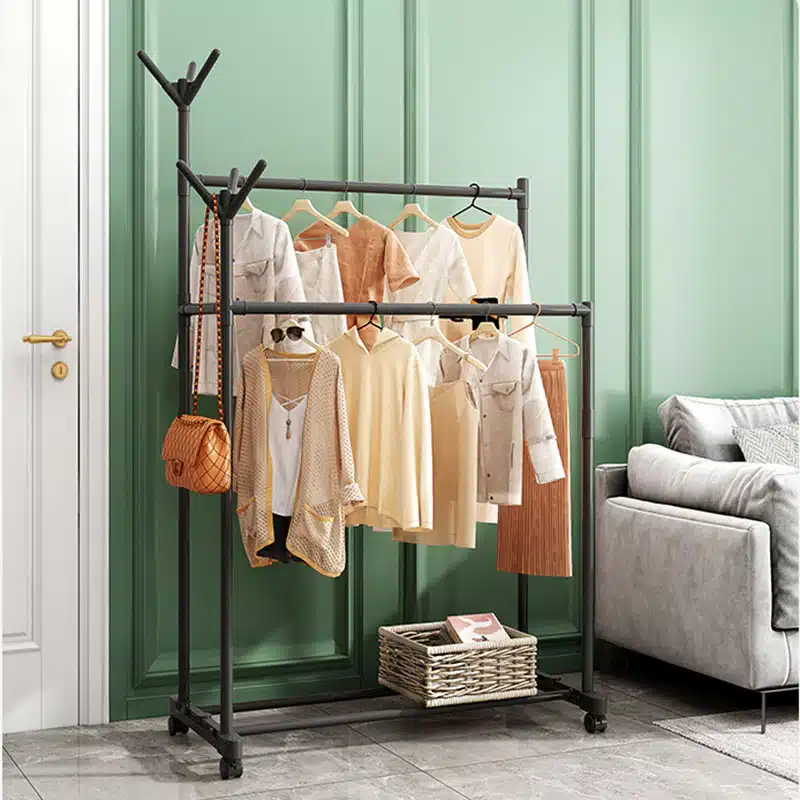
Conclusion
In a world where excess and constant change often dominate, embracing a minimalist wardrobe becomes a powerful statement of intentionality and self-awareness. As you embark on this journey, remember that it’s not just about reducing the number of clothing items; it’s about cultivating a mindful and purposeful approach to your personal style.
By curating a collection of timeless, versatile pieces, you’re making a commitment to cherish quality over quantity. This shift in mindset empowers you to embrace your individuality without succumbing to the pressures of ever-changing trends. As you carefully select each item, you’re creating a wardrobe that reflects your true self, simplifies your daily routine, and alleviates decision fatigue.
Beyond personal benefits, adopting a minimalist wardrobe has far-reaching positive impacts. You’re contributing to a more sustainable fashion ecosystem by supporting ethical practices and reducing waste. Your choices have the potential to inspire others to question their consumption patterns and make conscious decisions.
Ultimately, a minimalist wardrobe embodies the essence of “less is more.” It’s about freeing yourself from the burden of excess, both physically and mentally, and embracing a lifestyle that emphasizes what truly matters. As you embrace this intentional approach to fashion, you’re inviting a sense of clarity, confidence, and authenticity into your life—an embodiment of the beauty that can be found in simplicity. It is about releasing yourself from the load of excess, both psychologically and physically, and adopting a way of life that places an emphasis on the things that are genuinely important.



